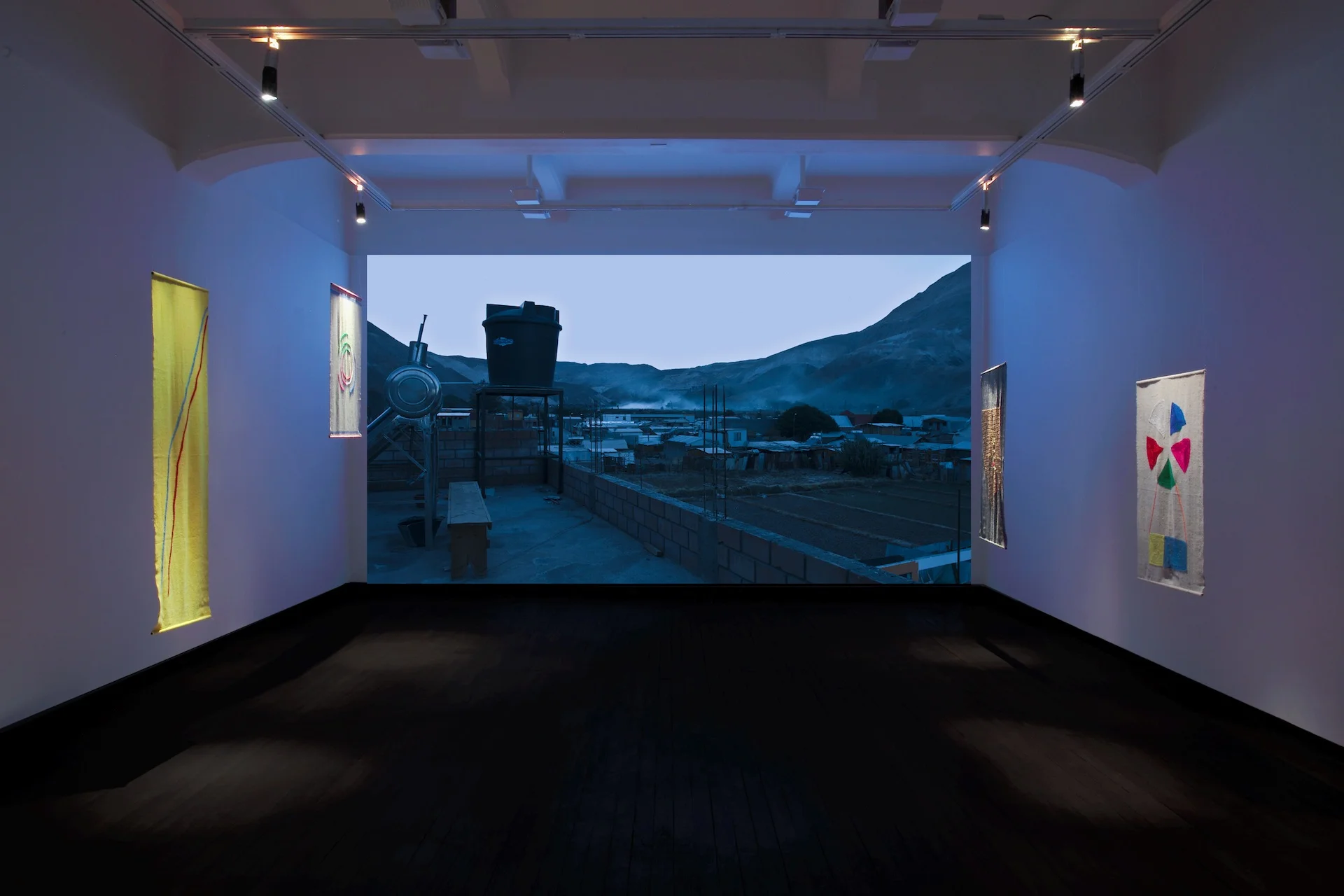Textiles Works
Galeria Macchina - Universidad Catolica
November 18 - December 30, 2014
Opening reception and lecture November 18, 2014, 6 - 9pm
Textiles Works represents Mario Pfeifer’s latest project conducted in the Tarapacá region in the north of Chile. Through on-site investigations in the town of Camiña, Mario Pfeifer takes the Aymara textile production as a point of departure for a conversation about the aesthetic, social, economical, and religious issues present in the indigenous life of the Aymara*. In the Aymaran oral tradition, traditional textile production remains one of the few visual artifacts that the community produces nowadays. Made of both naturally and chemically dyed llama wool, the designs crafted by Aymara women are more visually inspired than informative. Mario Pfeifer, in conversation with curator, writer, and researcher Rodolfo Andaur, collected statistical materials from different public archives and institutions that determine Camiña’s productivity, ethnic variety, and transmigration, or the physical destruction caused by mudslides. This information was visualized into digitally created rasters similar to the weaving structures used by the Aymara textile producers. Through a conversational process these information designs are interpreted, adapted, and altered into commissioned weaving by several Aymara textile producers, allowing them to create objects that tell the story of their present situation through a traditional technique in a contemporary remote region. The presentation of textiles, design drafts, correspondences in image, text, and sound, conversations in Aymara conducted by Rodolfo Andaur, and an 4K video projection are the building blocks of the exhibition at Galeria Macchina, which is to open on November 18, 2014. In the gallery’s upper-floor space, a sound installation composed of a conversation and several music tracks are counterposed with an excerpt of Seth Siegeslaub’s seminal text A Very Speculative but Brief Note on Textiles and Society (1997).
A publication on the research, production, and presentation of the project will be available in 2015.
A public lecture and conversation at Universidad Catolica is scheduled for November 18, 2014.
The artist’s residency, project and exhibition was organized by Consejo Nacional de la Cultura y las Artes and is funded by the Goethe-Institut, Santiago de Chile.
_______________
*Aymara refers to the group of individuals who speak Aymara and also to individuals and groups who claim to identify themselves as Aymara. There is no unique subgroup of ethnic Aymara, and Aymara cannot be considered exclusive to any such ethnic grouping. This is because different subgroups such as Qullas, Lupaqas, Qanchis, Carangas, Lucanas, Chocorvos, Chichas, etc. all spoke Aymara from pre-Inca times. Geographically these groups were settled in different parts of the present highlands of Peru and Bolivia with a few in the Arica y Parinacota and Tarapacá regions in Chile. Aymara (Aymar aru) is an Aymaran language, and is one of only a handful of Native American languages with over three million speakers. The Aymara language is an agglutinating and to a certain extent polysynthetic language, and has a subject–object–verb word order. - Rodolfo Andaur
